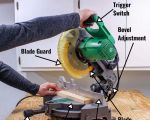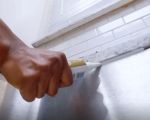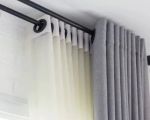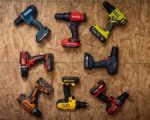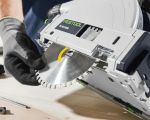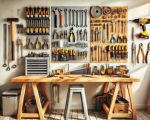- Understanding-Rotary-Tools-For-Home-Projects
- Key-Features-To-Look-For
- Top-Rotary-Tools-For-Home-Projects
- Must-Have-Accessories-And-Attachments
- Real-Life-User-Case-Study
- Maintenance-And-Pro-Tips
1. Understanding Rotary Tools for Home Projects
When tackling DIY repairs or creative crafts around the house, knowing the best rotary tool for home projects can transform a frustrating afternoon into a breeze. Rotary tools combine high-speed rotation with a vast array of attachments, allowing you to drill, sand, cut, polish, and engrave—all with one handheld device. Unlike dedicated saws or sanders, a quality rotary tool provides precision and flexibility, whether you’re opening grout lines in a bathroom, carving intricate patterns into wood, or smoothing rough edges on PVC pipes.
Homeowners often underestimate the versatility of these compact powerhouses. By investing in the best rotary tool for home projects, you consolidate multiple tools into a single solution, freeing up storage space and reducing upfront costs. Plus, the ergonomic design of modern rotary tools ensures comfort during extended use, preventing hand fatigue when you tackle multiple tasks in one session. Understanding these benefits is the first step toward selecting the ideal model for your needs.
2. Key Features to Look For
Pinpointing the best rotary tool for home projects requires evaluating core features that impact performance and ease of use.
2.1 Variable Speed Control
Look for tools offering a wide RPM range—ideally 5,000 to 35,000 RPM. Lower speeds suit grinding and carving, while higher speeds excel at polishing metal and cutting fiberglass.
2.2 Power Source: Corded vs. Cordless
Corded models deliver consistent power for heavy-duty work, but limit mobility. Cordless rotary tools provide freedom to move—perfect for outdoor tasks—and avoid extension cords, though runtime depends on battery capacity.
2.3 Ergonomics and Weight
A lightweight, pencil-grip body enhances precision, particularly during detailed engraving or sanding in tight corners. Rubberized grips reduce slipping and vibration transmission to your hand.
2.4 Accessory Compatibility
The more universal the collet system (1/8" and 3/32"), the broader the range of attachments you can use—ensuring the tool truly becomes a multi-purpose workhorse.
3. Top Rotary Tools for Home Projects
Based on the key features above, these models consistently rank as the best rotary tool for home projects among DIYers and pros alike:
3.1 Dremel 4000-2/30
Known for its robust motor and 30-piece accessory kit, the Dremel 4000-2/30 offers precise speed control and an EZ Twist nose cap for quick bit changes—ideal for intricate woodworking.
3.2 WEN RT1506
A budget-friendly alternative, the WEN RT1506 provides ample speed settings, two batteries for extended cordless use, and compatibility with standard Dremel bits—perfect for hobbyists on a budget.
3.3 Bosch GRO 12V-35
Compact and lightweight, this Bosch model excels in tight spaces. Its brushless motor ensures long life, and the 12V battery delivers reliable torque for light masonry drilling or tile removal.
4. Must-Have Accessories and Attachments
Even the best rotary tool for home projects needs the right add-ons to unlock its full potential:
4.1 Cutting Wheels and Discs
Thin fiberglass-reinforced discs for metal and hard plastics; diamond-coated wheels for grout and tile cuts.
4.2 Sanding Bands and Discs
Various grits for smoothing wood, metal rust removal, or polishing acrylic—use mandrels sized to your tool’s collet.
4.3 Drill Bits and Engraving Tips
Titanium-coated bits for drilling pilot holes; carbide bits for robust engraving in hard metals or ceramics.
4.4 Polishing Pads and Compounds
Soft felt wheels paired with fine polishing compounds restore shine to stainless steel fixtures and jewelry.
For curated accessory bundles tailored to your project scope, visit ToolNest and discover kits organized by material and application.
5. Real-Life User Case Study
Meet Alex, a weekend DIYer who revamped his old coffee table using a rotary tool. He chose the Dremel 4000-2/30 based on its reputation as the best rotary tool for home projects. First, he installed a sanding drum to strip the worn finish and smooth water stains. Next, using a plunge-cutting bit, he cut a decorative groove along the tabletop edge—something he couldn’t achieve with his jigsaw. Finally, a polishing wheel and compound restored brass legs to gleaming condition. Alex credits the rotary tool’s versatility for completing the project in a single afternoon, saving money on professional refinishers, and gaining confidence for future woodworking endeavors.
6. Maintenance and Pro Tips
Ensuring your rotary tool remains the best rotary tool for home projects involves regular care and smart usage.
6.1 Clean and Lubricate
After heavy sanding or cutting, blow out dust from vents and spin the collet without an accessory to eject debris. Periodically apply a drop of machine oil to the spindle bearings for smooth operation.
6.2 Replace Worn Collets and Brushes
For corded models, replacing carbon brushes every 50–100 hours prevents motor strain. Keep a spare set of collets to maintain secure bit grip.
6.3 Match Speed to Task
Avoid overheating bits by starting at lower RPMs, especially when working with plastics or woods prone to melting and burning. Gradually increase speed as needed.
Armed with the right model, accessories, and know-how from ToolNest, you’ll confidently tackle any DIY challenge. Choose the best rotary tool for home projects today and elevate your craftsmanship.


